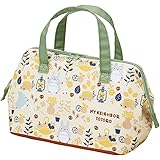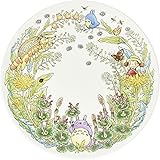Studio Ghibli, the renowned Japanese animation studio founded by Hayao Miyazaki and Isao Takahata, is celebrated for its breathtaking films that blend rich storytelling with stunning visuals. While many fans adore the animated movies, a growing interest has emerged around the figurines that encapsulate the magic of these films. This article delves into the craftsmanship behind Studio Ghibli figurines, exploring the meticulous artistry, the materials used, the techniques employed, and the cultural significance of these collectibles.
The Allure of Studio Ghibli Figurines
Studio Ghibli figurines serve as tangible connections to the enchanting worlds crafted by the studio. They often depict beloved characters from films such as “My Neighbor Totoro,” “Spirited Away,” and “Princess Mononoke.” The appeal of these figurines lies in several factors:
- Nostalgia: For many, these figurines evoke cherished memories of childhood and the storytelling magic of Ghibli films.
- Artistic Value: The figurines are not merely toys; they are pieces of art that reflect the unique aesthetic of Studio Ghibli.
- Collectibility: Limited editions and unique designs attract collectors, making them sought-after items.
The Craftsmanship Process
The creation of Studio Ghibli figurines involves several stages, each demanding a high level of skill and attention to detail. Understanding this process sheds light on the artistry involved.
1. Concept Design

The journey of a figurine begins with concept design. Artists and designers create sketches based on the characters and scenes from the films. This stage is essential in capturing the essence of the character while also considering the final form of the figurine.
2. Sculpting
Once the concept is finalized, sculptors begin the intricate work of creating a three-dimensional model. This can be done using various materials, including:
- Clay: Traditional sculpting often starts with clay, allowing for detailed expressions and textures.
- Digital Sculpting: Advanced techniques utilize 3D modeling software, enabling precise and replicable designs.
Both methods require a deep understanding of anatomy, movement, and character design to ensure that the figurine captures the spirit of the character accurately.
3. Molding and Casting

After sculpting, molds are created to produce the figurines in larger quantities. This process involves:
- Silicone Molds: High-quality silicone is often used for its flexibility and ability to capture fine details.
- Resin Casting: Once the molds are ready, resin is poured into them to create the final figurine.
This stage is crucial for maintaining consistency across multiple figurines, ensuring that each piece retains the quality of the original sculpt.
4. Painting and Finishing Touches

After the casting process, the figurines are meticulously painted. Artisans use a variety of techniques to achieve a high level of detail, including:
- Hand-Painting: Many figurines are hand-painted, allowing for unique touches that mass production cannot replicate.
- Airbrushing: This technique provides smooth gradients and intricate patterns, particularly for characters with complex designs.
The finishing touches may include adding accessories, applying a protective coating, and ensuring that all parts fit seamlessly together.
Materials Used in Figurine Creation

The choice of materials significantly impacts the quality and durability of Studio Ghibli figurines. Common materials include:
- Polyvinyl Chloride (PVC): Often used for mass-produced figures due to its flexibility and ease of molding.
- Resin: Known for its ability to capture intricate details, resin is often used for limited edition or high-end figures.
- ABS Plastic: This material is lightweight and durable, making it popular for articulated figures.
Additionally, the use of eco-friendly materials is becoming more prevalent as awareness of environmental concerns grows among manufacturers and consumers alike.
The Cultural Significance of Ghibli Figurines

Beyond their artistic and collectible value, Studio Ghibli figurines hold cultural significance in Japan and around the world. They serve as symbols of:
- Storytelling: Each figurine represents a story, a character arc, and the emotional experiences that resonate with viewers.
- Artistry: They embody the craftsmanship and dedication of artists who strive to preserve the essence of Ghibli films.
- Connection: Figurines foster a sense of community among fans, as collectors often share their collections and experiences online.
Case Study: The Totoro Figurine

The Totoro figurine is one of the most iconic representations of Studio Ghibli. The character from “My Neighbor Totoro” has inspired countless collectibles. One particular case study of interest is the limited edition Totoro figurine released in collaboration with a renowned manufacturer.
This figurine was crafted with extraordinary attention to detail, showcasing the character’s fluffy texture and friendly demeanor. Released in a limited run, it quickly became a sought-after item among collectors, with prices soaring on the secondary market. This phenomenon highlights the intersection of artistry, nostalgia, and collectibility that characterizes the world of Ghibli figurines.
Statistics and Market Trends
The market for collectible figurines has been on the rise in recent years, with anime and animation collectibles, in particular, seeing significant growth. Some relevant statistics include:
- The global collectible figurine market was valued at approximately $10 billion in 2021 and is projected to grow at a CAGR of 5.5% through 2028.
- Anime-themed collectibles account for a substantial portion of this market, driven by a growing global fanbase.
- Online marketplaces have made it easier for collectors to acquire rare items, leading to increased demand for limited edition Studio Ghibli figurines.
Behind the scenes of Studio Ghibli figurine creation lies a world of artistry and craftsmanship that captivates fans and collectors alike. From the initial concept design to the final painted product, each figurine is a labor of love that reflects the enchanting spirit of Studio Ghibli films. The materials used and the techniques employed ensure that these figurines not only serve as collectibles but also as cultural artifacts that resonate with audiences across generations.
The growing market for these figurines underscores their significance, both as artistic expressions and nostalgic treasures. As Studio Ghibli continues to inspire new generations, the craftsmanship behind their figurines will remain a vital link to the magic of storytelling, artistry, and community.




